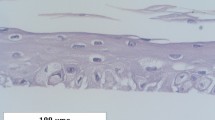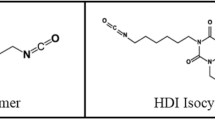Abstract
TUMOUR-PROMOTING agents have been defined by their ability to promote tumour formation on carcinogen-initiated mouse skin. The most potent of these agents are the diesters of phorbol which are the active components of croton oil, the classic promoting substance. Phorbol esters can be chemically modified in a number of positions to form molecules with a wide range of promoter potency1. Such modifications have been useful in determining structure-function relationships2. A good correlation exists between the ability of phorbol esters to promote epidermal tumours and their ability to stimulate epidermal macro-molecular synthesis in vivo3,4. In particular, all tumour promoters stimulate synthesis of epidermal DNA, although not all chemicals which induce hyperplasia are promoters1. Recently O'Brien et al.5 suggested that the degree of induction of ornithine decarboxylase (ODC) activity in mouse skin after application of promoting and non-promoting compounds correlates well with their promoting potency. Evidence from our laboratory indicates that brief exposure to the potent phorbol ester 12-O-tetradecanoyl-phorbol-13-acetate (TPA), stimulates DNA synthesis and ODC activity in mouse epidermal cell cultures (S.H.Y., T.B., E.P., D. Michael, K. Elgjo and H.H., to be published, and U.L. and S.H.Y., to be published). Using such a culture system, we have examined a series of phorbol esters to test the correlation of promoter potency in vivo with the stimulation of DNA synthesis and ODC activity in vitro.
This is a preview of subscription content, access via your institution
Access options
Subscribe to this journal
Receive 51 print issues and online access
$199.00 per year
only $3.90 per issue
Buy this article
- Purchase on Springer Link
- Instant access to full article PDF
Prices may be subject to local taxes which are calculated during checkout
Similar content being viewed by others
References
Boutwell, R. K., CRC Crit. Rev. in Toxicol, 419–443 (1974).
Hecker, E., and Schmidt, R., Fortschr. Chem. org. NatStoffe, 31, 377–467 (1974).
Baird, W. M., Sedgwick, J. A., and Boutwell, R. K., Cancer Res., 31, 1434–1439 (1971).
Baird, W. M., Melera, P. W., and Boutwell, R. K., Cancer Res., 32, 781–788 (1972).
O'Brien, T. G., Simsiman, R. C., and Boutwell, R. K., Cancer Res., 35, 2426–2433 (1975).
Yuspa, S. H., and Harris, C. C., Expl Cell Res., 86, 95–105 (1974).
Yuspa, S. H., Hennings, H., Dermer, P., and Michael, D., Cancer Res., 36, 947–951 (1976).
Langenbach, R., and Kuszynski, C., J. natn. Cancer Inst., 55, 801–802 (1975).
Baird, W. M., and Boutwell, R. K., Cancer Res., 31, 1074–1079 (1971).
Burton, K., Biochem. J., 62, 315–333 (1956).
Layne, E., in Methods in Enzymology, III (edit. by Colowick, S. P., and Kaplan, N. O.), 448–450 (Academic, New York, 1957).
Slaga, T. J., Scribner, J. D., Thompson, S., and Viaje, A., J. natn. Cancer Inst. (in the press).
Scribner, J. D., and Boutwell, R. K., Eur. J. Cancer, 8, 617–621 (1972).
Lichti, U., and Yuspa, S. H., Proc. Am. Ass. Cancer Res., Abstr., 17, 138 (1976).
Author information
Authors and Affiliations
Rights and permissions
About this article
Cite this article
YUSPA, S., LICHTI, U., BEN, T. et al. Phorbol esters stimulate DNA synthesis and ornithine decarboxylase activity in mouse epidermal cell cultures. Nature 262, 402–404 (1976). https://doi.org/10.1038/262402a0
Received:
Accepted:
Published:
Issue Date:
DOI: https://doi.org/10.1038/262402a0
This article is cited by
-
Antizyme and antizyme inhibitor, a regulatory tango
Cellular and Molecular Life Sciences (2009)
-
Neoplastic transformation of rat liver epithelial cells is enhanced by non-transferrin-bound iron
BMC Gastroenterology (2008)
-
Overexpression of antizyme-inhibitor in NIH3T3 fibroblasts provides growth advantage through neutralization of antizyme functions
Oncogene (2006)
-
Analysis of ornithine decarboxylase messenger ribonucleic acid expression in colorectal carcinoma
Diseases of the Colon & Rectum (1997)
-
Blockade of Ornithine Decarboxylase Enzyme Protects against Ischemic Brain Damage
Journal of Cerebral Blood Flow & Metabolism (1994)
Comments
By submitting a comment you agree to abide by our Terms and Community Guidelines. If you find something abusive or that does not comply with our terms or guidelines please flag it as inappropriate.



